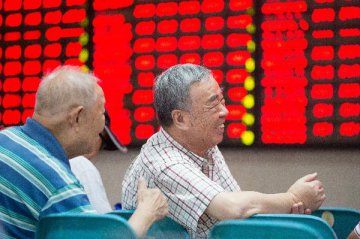
The annual report released by the National Council for Social Security Fund (SSF) shows that the national social security fund received 31.94 billion yuan returns from equity investment in 2016, with an investment yield of 1.73 percent. The fund’s investment yield in 2015 stood at 15.19 percent in 2015. According to statistics, the national social security fund made a total investment profit of 822.731 billion yuan since its establishment in August 2000, with an average annual investment yield of 8.37 percent.
Currently, the funding sources managed by the SSF mainly include the national social security fund, central fiscal subsidies in individual accounts entrusted by relevant provincial (regional/municipal) governments and their investment returns, the basic pension insurance fund of some enterprises in Guangdong Province and Shandong Province and some fund of the basic pension insurance fund entrusted by provincial (regional/municipal) governments and their investment returns.
The annual report shows that the national social security fund received 31.94 billion yuan returns from equity investment in 2016, with an investment yield of 1.73 percent. In breakdown, the amount of realized returns was 91.642 billion yuan, with a yield of 5.44 percent. The variation in the fair value of trading assets was -59.702 billion yuan. The national social security fund made a total investment profit of 822.731 billion yuan since its establishment in August 2000, with an average annual investment yield of 8.37 percent. At the end of 2016, the total equity of the national social security fund was 1,948,807 million yuan.
"In recent years, the national social security fund has expanded rapidly via prudent and stable investment and legal operation. Its investment returns have maintained steady growth. Its value has preserved and increased while its security has ensured,” said an official of the SSF. He said that the SSF has formed an asset allocation system for the investment and operation of the fund, including strategic asset allocation plan, annual tactical asset allocation plan and quarterly asset allocation implementation plan, and will invest, operate and manage the fund in the principle of prudent investment, safety first, risk control and return improvement to ensure the safety of the fund and preserve and increase its value.
At the end of December last year, the SSF announced the first batch of pension management agencies, including 4 custodians and 21 investment management agencies. Pension funds have started to invest into the stock market, which attracted much attention.
In May this year, SSF chairman Lou Jiwei pointed out that the basic pension insurance fund and social security fund is different. There will be a big difference in the expected returns between the pension fund and the social security fund. The expected yield of the pension fund is very likely to be lower than that of the social security fund. The main reason is that the pension fund is only surplus in current stage. It has high requirement for liquidity yet low risk tolerance. All provincial consignors require that there should be minimum rate of return. Therefore, it should be more cautious on its investment and operation. Compared to the social security fund, the pension fund mainly invests in fixed income assets, but not in foreign assets and private equity funds. The proportion of its investment in stocks is also low. Therefore, the pension fund can be safer, yet its expected yields will be correspondingly lower.
According to statistics, as of the end of the first quarter of this year, the national social security fund made itself the top ten tradable shareholders of 648 companies, down from the 699 companies in the fourth quarter of 2016. In terms of the market value of shareholding, the total market value of shareholdings of which it made itself the top ten tradable shareholders was 180.932 billion yuan, slightly up by 1.33 percent, or 2.38 billion yuan from the 178.552 billion yuan in the fourth quarter of 2016. As for the change in positions in industry, it increased large shareholdings in mining, building materials, electronics, commercial trade and household appliances, and decreased large shareholdings in textile and garment, agriculture, forestry, animal husbandry and fishery and communications.
Translated by Coral Zhong





















Latest comments